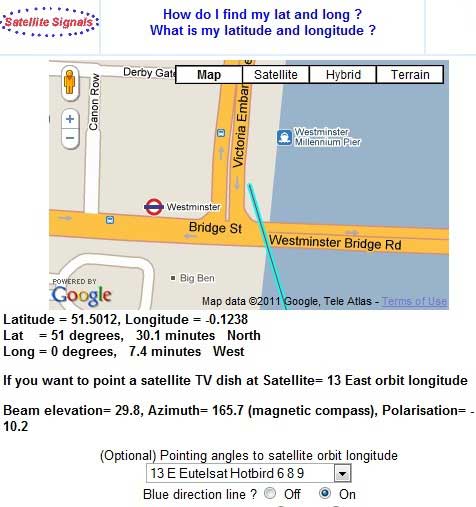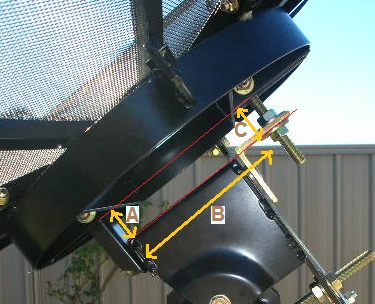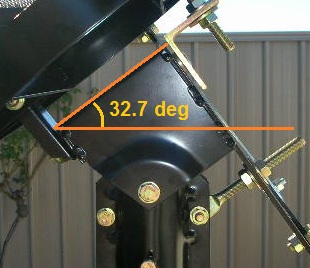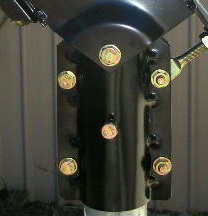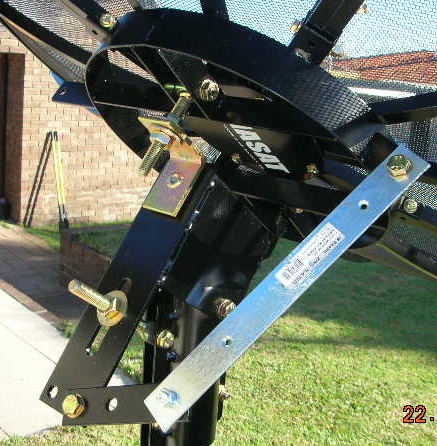| Home Login Register |
| Satellite Internet forum › Dish pointing and alignment › Finding your latitude and longitude |
|
Pages: 1
|
Finding your latitude and longitude(Read 97264 times) |
|
Eric Johnston
Senior Member
★★★ Offline Posts: 2109 |
Dec 7th, 2005 at 11:37pm
|
| Back to top |
« Last Edit: Jan 31st, 2020 at 1:19pm by Admin1 »
IP Logged
|
|
Ex Member
Ex Member
|
Reply #1 - Dec 8th, 2005 at 12:55pm
|
| Back to top |
IP Logged
|
|
Ex Member
Ex Member
|
Reply #2 - Dec 21st, 2005 at 2:04pm
|
| Back to top |
IP Logged
|
|
Ex Member
Ex Member
|
Reply #3 - Jan 1st, 2006 at 4:19pm
|
| Back to top |
IP Logged
|
|
Eric Johnston
Senior Member
★★★ Offline Posts: 2109 |
Reply #4 - Jan 1st, 2006 at 5:33pm
|
| Back to top |
« Last Edit: Jan 31st, 2020 at 1:20pm by Admin1 »
IP Logged
|
|
Ex Member
Ex Member
|
Reply #5 - Jan 2nd, 2006 at 4:08pm
|
| Back to top |
IP Logged
|
|
toxic
Guest
|
Reply #6 - Jan 6th, 2006 at 1:54pm
|
| Back to top |
IP Logged
|
|
Eric Johnston
Senior Member
★★★ Offline Posts: 2109 |
Reply #7 - Jan 6th, 2006 at 4:57pm
|
| Back to top |
« Last Edit: Jan 31st, 2020 at 1:20pm by Admin1 »
IP Logged
|
|
Ex Member
Ex Member
|
Reply #8 - Jan 6th, 2006 at 7:39pm
|
| Back to top |
IP Logged
|
|
Eric Johnston
Senior Member
★★★ Offline Posts: 2109 |
Reply #9 - Jan 6th, 2006 at 9:49pm
|
| Back to top |
« Last Edit: Jan 31st, 2020 at 1:21pm by Admin1 »
IP Logged
|
|
Ex Member
Ex Member
|
Reply #10 - Jan 7th, 2006 at 2:07pm
|
| Back to top |
IP Logged
|
|
Eric Johnston
Senior Member
★★★ Offline Posts: 2109 |
Reply #11 - Apr 27th, 2006 at 8:47pm
|
| Back to top |
« Last Edit: Jan 31st, 2020 at 1:21pm by Admin1 »
IP Logged
|
|
Eric Johnston
Senior Member
★★★ Offline Posts: 2109 |
Reply #12 - Jun 6th, 2006 at 10:55pm
|
| Back to top |
« Last Edit: Jan 31st, 2020 at 1:21pm by Admin1 »
IP Logged
|
|
Eric Johnston
Senior Member
★★★ Offline Posts: 2109 |
Reply #13 - Aug 16th, 2007 at 3:06pm
|
| Back to top |
« Last Edit: Jan 31st, 2020 at 1:22pm by Admin1 »
IP Logged
|
|
patmos
Member
★★ Offline Posts: 18 |
Reply #14 - Aug 23rd, 2007 at 11:19am
|
| Back to top |
IP Logged
|
|
Eric Johnston
Senior Member
★★★ Offline Posts: 2109 |
Reply #15 - Aug 23rd, 2007 at 11:40am
|
| Back to top |
« Last Edit: Jan 31st, 2020 at 1:22pm by Admin1 »
IP Logged
|
|
patmos
Member
★★ Offline Posts: 18 |
Reply #16 - Aug 23rd, 2007 at 2:26pm
|
| Back to top |
IP Logged
|
|
Eric Johnston
Senior Member
★★★ Offline Posts: 2109 |
Reply #17 - Jan 25th, 2011 at 5:48pm
|
| Back to top |
« Last Edit: Jan 25th, 2011 at 10:23pm by Admin1 »
IP Logged
|
|
Bejo
Member
★★ Offline Posts: 3 Australia |
Reply #18 - May 21st, 2012 at 10:14am
|
| Back to top |
Bejo-Aussie
IP Logged
|
|
Eric Johnston
Senior Member
★★★ Offline Posts: 2109 |
Reply #19 - May 21st, 2012 at 1:04pm
|
| Back to top |
IP Logged
|
|
Eric Johnston
Senior Member
★★★ Offline Posts: 2109 |
Reply #20 - May 22nd, 2012 at 9:24am
|
| Back to top |
« Last Edit: Jan 31st, 2020 at 1:23pm by Admin1 »
IP Logged
|
|
Bejo
Member
★★ Offline Posts: 3 Australia |
Reply #21 - May 22nd, 2012 at 11:15am
|
| Back to top |
Bejo-Aussie
IP Logged
|
|
Eric Johnston
Senior Member
★★★ Offline Posts: 2109 |
Reply #22 - May 22nd, 2012 at 11:52am
|
| Back to top |
« Last Edit: Jan 31st, 2020 at 1:24pm by Admin1 »
IP Logged
|
|
Bejo
Member
★★ Offline Posts: 3 Australia |
Reply #23 - May 23rd, 2012 at 12:02pm
|
| Back to top |
Bejo-Aussie
IP Logged
|
|
sjayaraj7
Member
★★ Offline Posts: 2 |
Reply #24 - Jun 7th, 2012 at 9:56am
|
| Back to top |
IP Logged
|
|
SuperDave
Member
★★ Offline Posts: 18 |
Reply #25 - Jun 7th, 2012 at 1:32pm
|
| Back to top |
Dave
IP Logged
|
|
Pages: 1
|
Email me: eric@satsig.net
Powered by YaBB 2.5.2!
YaBB Forum Software © 2000-. All Rights Reserved.
Disclaimer, Terms of Use and Privacy Forum User Agreement Forum rules Cookie policy.



